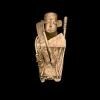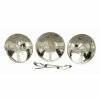
History Hunters International
Revealing the Treasures of History|
Main Menu
Recent Articles
Ancient History
Among the Norse Tribes by Administration
The Sindbad Voyage by Administration The Sindbad Stories by Administration Correspondence in Clay by Administration Ancient Jordan from the Air by Administration Alexander: The Great Mystery by Administration Throne Room of The Gods by Administration The First Day Of The World by Administration The Role of Animals of Ancient Egypt by Administration The Babylonian Legends of the Creation by Administration
Archaeology
Geophysical survey by Administration
Ground-Penetrating Radar by Administration Aviation Archaeology - England by Administration Magnetometer by Administration Excavation by Administration Neanderthals in Europe by Administration Drowned Cities of the Upper Euphrates by Administration Endangered archaeology of the Kharga Oasis, Egypt by Administration Straight Lines in Nature by Administration Oman: The Lost Land by Administration Correspondence in Clay by Administration Jamestown 2007 - Events Are Already Making History In Virginia by Administration Before the Mummies: The Desert Origins of the Pharaohs by Administration Dead Kings Are Hard to Find by Administration Alexander by Administration What Was Jiroft? by Administration
General Articles
Al-Farghani and the ?Short Degree? by Administration
Questionable Origins by Administration A History of the World by Administration The Castles of The Crusaders by Administration Piri Reis and the Columbus Map by Administration Bligh: The Voyage Home by Administration The Imperial Capital by Administration Revealing the Secrets of Al Capone?s Fortress West by Administration John Cabot's 1497 Voyage & the Limits of Historiography by Administration TB, a Levant Company Factor on Pilgrimage, 1669 by Administration "Honest Benbow" by Administration BUCCANEERS by Administration Southwark - Famous Inns of Olden Times by Administration Seas Beneath The Sands by Administration The Iliad by Administration The Diplomacy of the Sons by Administration Blackbeard, Or The Pirate of Roanoke by Administration Atlantis: The Antediluvian World by Administration
Maritime Archaeology
International Convention on Salvage, 1989 by Administration
Story of the Southern Bahamas Wreck by Administration Careening by Administration The Silver Ship by Administration Egypt's Underwater World by Administration Shipwrecks: Myths and Reality by Administration Mauritius and the Pirate Ship Speaker by Administration HMS Agamemnon by Administration Boats of Early Mesopotamia by Administration The Sadana Islands Shipwreck by Administration
Metal Detecting
Buried Treasure - Where To Look by Administration
150-Million Year Old Baby Bird Fossil/ W Hide Scraper! by Administration How To Swing A Metal Detector For Success by Administration Choosing The Right Metal Detector by Administration What Should I Look For In A Metal Detector? by Administration Tips to Treasure Hunting With Metal Detectors by Administration Never Be Without a Place To Detect Again by Administration
Protection of Heritage
English Law on Treasure Trove by Administration
England: Rewarding Treasure Finders by Administration Aviation Archaeology and British Law by Administration Catalogue of Archaeological Frauds by Administration State of Florida's Archaeological Guidelines by Administration Review: On the Trail of the Tomb Robbers by Administration The Concept of Due Dilligence and the Antiquities Trade by Administration International law for the protection of the underwater cultural heritage: can our past be salvaged? by Administration The Lost Treasures of Henri Vever by Administration Code of Ethics for Museums by Administration Indications that the "Brother of Jesus" Inscription is a Forgery by Administration Final Report Of The Examining Committees For the Yehoash Inscription and James Ossuary by Administration
Treasures
�460,000 Coin Record by Administration
Nuestra Se?ora de Atocha by Administration The Golden Torc by Administration Gold Treasures from Ancient Greece by Administration Copper Scroll by Administration Ancient Analogue Astronomical Computer by Administration A History in Silver and Gold by Administration Celebrating Treasure by Administration Play Phaos by Administration
World of Islam
Ishbiliyah: Islamic Seville by Administration
The Poet-King of Seville by Administration The City of Al-Zahra by Administration The Final Flowering by Administration The Golden Caliphate by Administration Granada's New Convivencia by Administration Saladin: Story of a Hero by Administration Islamic Sicily by Administration The Greater War by Administration Europe?s Oriental Heritage by Administration The Mountain of the Knights by Administration Muslims And Muslim Technology In The New World by Administration Brothers of the Javelin by Administration The Barb by Administration Fortress of the Mountain by Administration Stones That Did the Work of Men by Administration History's Hinge - 'Ain Jalut by Administration |
Pages: [1] 2
|
|||||||||||||||||||||||||||||||||||||||||||










